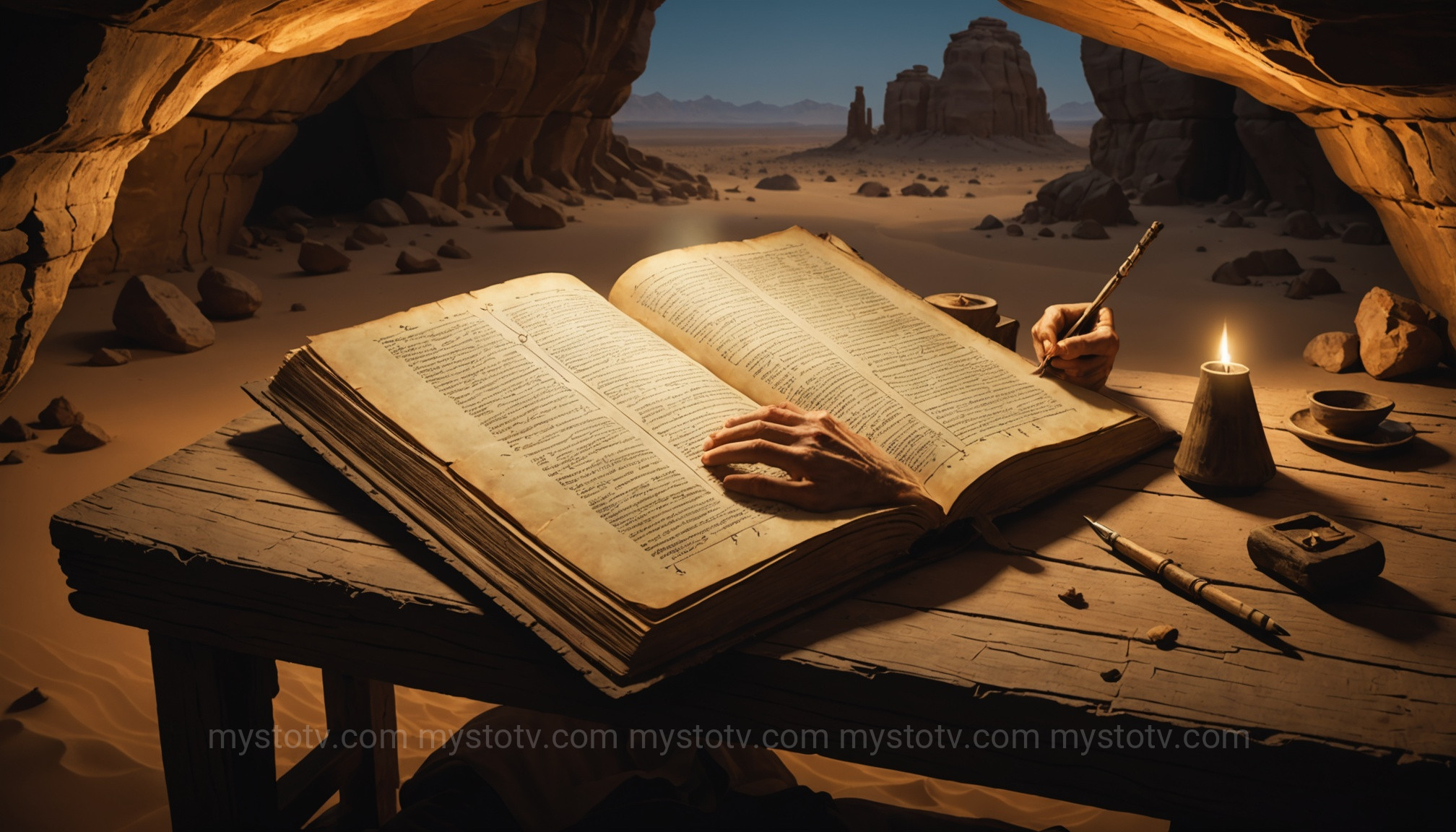Contents
- 1 Unveiling the Gnostic Gospels: Challenging Early Christian Sacred Texts Mysteries
- 2 The Pistis Sophia: Navigating Cosmic Drama and Its Sacred Texts Mysteries
- 3 The Voynich Manuscript: An Examination of Ultimate Sacred Texts Mysteries
- 4 The Mandaean Ginza Rba: A Living Tradition's Sacred Texts Mysteries
- 5 Conclusion: The Enduring Allure of Sacred Texts Mysteries
Unveiling the Gnostic Gospels: Challenging Early Christian Sacred Texts Mysteries

Perhaps the most significant discovery to reshape our understanding of early Christianity was the unearthing of the Nag Hammadi library in Egypt in 1945. This collection of Coptic Gnostic codices contained dozens of previously unknown or long-lost writings, presenting a radical departure from orthodox Christian doctrine. These texts are central to the study of Gnostic sacred texts mysteries, a belief system that emphasized gnosis, or direct, personal knowledge of the divine, as the path to salvation.
The Gospel of Thomas: Exploring Sayings and its Sacred Texts Mysteries
Unlike the canonical gospels which present a narrative of Jesus's life, death, and resurrection, the Gospel of Thomas is a collection of 114 cryptic sayings attributed to him. Its famous opening line, "These are the secret sayings that the living Jesus spoke and Didymos Judas Thomas recorded," immediately signals its esoteric nature. The mystery here is twofold. First, what is the origin of these sayings? Some scholars argue that Thomas may contain traditions even older than the canonical gospels, representing a very early "sayings tradition." Others see it as a later Gnostic composition. The analysis of these sacred texts mysteries reveals a different kind of Jesus—not a divine savior who dies for humanity's sins, but a spiritual guide who imparts wisdom to awaken the divine light within each person. This challenges the very foundation of narrative-based Christology.
The Gospel of Mary: A Woman's Role and its Sacred Texts Mysteries
Another powerful text from this tradition is the Gospel of Mary, which casts Mary Magdalene not as a mere follower, but as a preeminent apostle, privy to Jesus's most profound teachings. In the text, she comforts the fearful male disciples and shares secret revelations from the Savior that they did not receive. The ensuing conflict, where Peter challenges her authority ("Did He really speak with a woman without our knowledge?"), is a dramatic moment. The analysis of this particular manuscript's sacred texts mysteries highlights the fierce debates over leadership and the role of women in the early church. It suggests the existence of thriving Christian communities where female authority was recognized, a perspective largely written out of the history that became orthodoxy.
Dating to the 3rd or 4th century, the Pistis Sophia ("Faith Wisdom") is one of the most extensive and complex Gnostic texts ever discovered. This lengthy Coptic manuscript details dialogues between a resurrected Jesus and his disciples, including Mary Magdalene, Martha, and Salome. It's a journey into a bewilderingly intricate Gnostic cosmology, filled with aeons, archons, and celestial realms. The central narrative follows the fall, repentance, and ultimate redemption of a divine female figure, the Sophia.

Analyzing the Pistis Sophia reveals deep sacred texts mysteries concerning the nature of sin, repentance, and salvation. Unlike orthodox concepts of original sin, Sophia's fall stems from her desire to ascend towards the ultimate divine light on her own, a sin of hubris and ignorance. Her journey back is marked by 13 powerful and poetic "repentances," which Jesus and the disciples interpret. The text is not just a mythological story; it's an allegorical map of the human soul's journey. The analysis suggests that salvation isn't a one-time event granted by an external savior but an arduous, multi-stage process of self-realization and liberation from material darkness, a core tenet of Gnostic thought.
The Voynich Manuscript: An Examination of Ultimate Sacred Texts Mysteries
A Code That Resists a Key: The Manuscript's Enduring Sacred Texts Mysteries
Shifting from religious narratives to pure enigma, we encounter the Voynich Manuscript. This early 15th-century codex is famous for one reason: no one can read it. Its pages are filled with an elegant, flowing script written in an unknown alphabet, accompanying bizarre and beautiful illustrations of unidentifiable plants, astrological charts with unfamiliar constellations, and naked women bathing in strange green liquid piped through organic-looking plumbing. For over a century, the world's best cryptographers, linguists, and historians have tried and failed to crack its code. This has led to it being called the "world's most mysterious book."
The analysis of this ultimate example of sacred texts mysteries (or perhaps secular ones) falls into several camps. Is it an elaborate, meaningless hoax designed to fool a wealthy patron? Is it a lost natural language written in a unique script, a theory supported by the text's adherence to certain linguistic laws like Zipf's law? Or is it a ciphered text, concealing alchemical, medical, or heretical knowledge? The fact that it has resisted even modern, AI-driven analysis makes it profoundly mysterious. The manuscript's endurance as an enigma forces us to confront the limits of our knowledge and our powerful desire to find meaning and pattern, even where none may exist. It is a Rorschach test for scholars; what they see in it often reflects their own field of expertise.
The Mandaean Ginza Rba: A Living Tradition's Sacred Texts Mysteries

Not all little-known scriptures are extinct. The Mandaeans are a small, ancient Gnostic-like ethno-religious group, originally from the marshes of southern Iraq, who revere John the Baptist as their chief prophet. Their primary holy book is the Ginza Rba or "Great Treasure." Written in the Mandaic Aramaic dialect, it's a compilation of texts from different periods, containing mythology, moral teachings, and liturgy. The analysis of its sacred texts mysteries offers a rare glimpse into a non-Christian Gnostic tradition that has survived into the modern era.
The Ginza Rba presents a dualistic worldview, pitting a world of light against a world of darkness. It contains its own unique creation myth, stories of messengers of light, and detailed instructions for soul-saving rituals, especially baptism (masbuta), which is central to their faith. The mystery for scholars lies in untangling its history and influences. It contains elements that appear to pre-date Christianity, polemics against Jesus, and parallels with other ancient Middle Eastern belief systems like Zoroastrianism. Studying the Ginza Rba is not just textual archaeology; it is an engagement with a living community's struggle to preserve its unique identity and ancient wisdom against overwhelming odds. These sacred texts mysteries are not just historical puzzles; they are the living breath of a faith. The journey into these enigmas, such as the mysteries of the Gnostic Gospels, is a continuous process of discovery.
Conclusion: The Enduring Allure of Sacred Texts Mysteries
The examination of little-known scriptures like the Gnostic Gospels, the Pistis Sophia, the Voynich Manuscript, and the Ginza Rba is a powerful reminder that our received history is just one version of the story. These texts push the boundaries of our understanding, revealing the incredible diversity of human spirituality and the creativity of our search for meaning. The enduring allure of sacred texts mysteries lies in their potential to offer new perspectives on old questions about God, humanity, and the cosmos. As we continue to uncover, translate, and analyze these enigmatic writings, we do more than just solve historical puzzles; we enrich our collective understanding of the complex, multifaceted, and often mysterious journey of the human spirit.